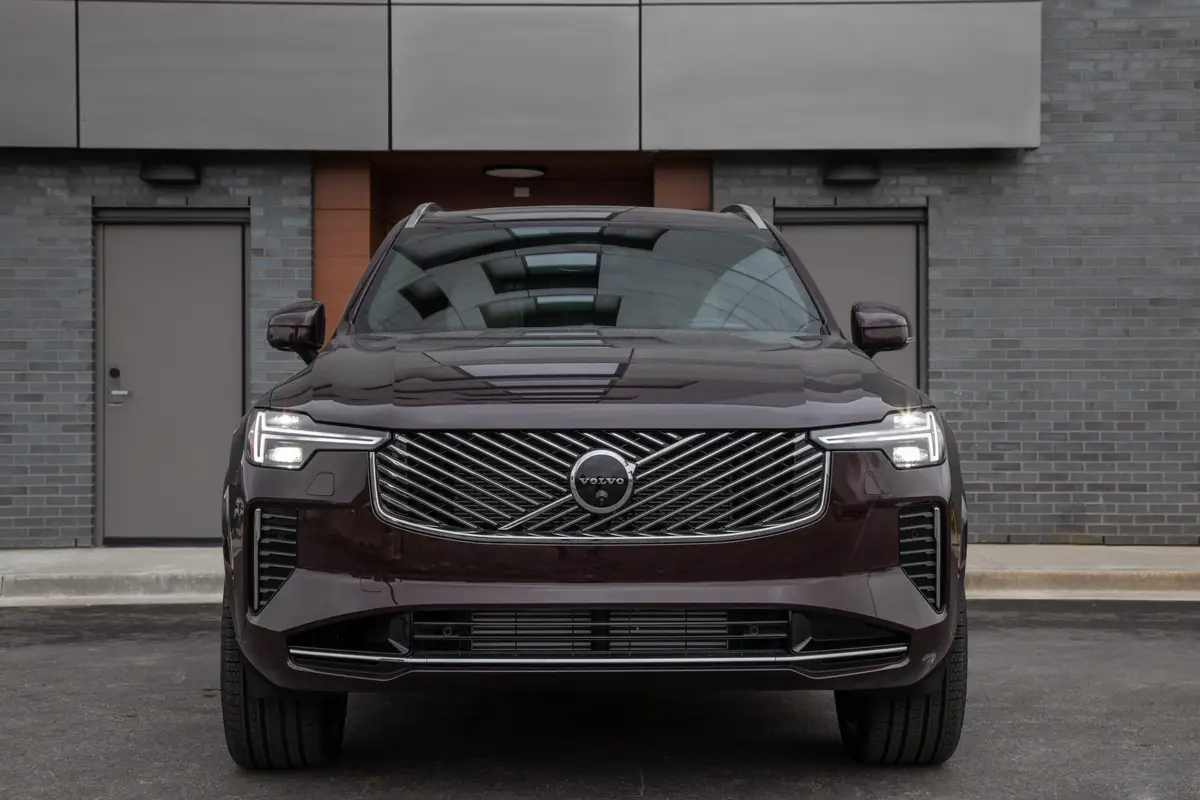2003 Cadillac CTS: What's New
Vehicle Overview
Cadillac has high hopes for its new rear-wheel-drive CTS sport sedan that replaced the midsize Catera, which was dropped from the luxury automakers lineup after the 2001 model year. Given a three-letter designation rather than a full name, the CTS (or Cadillac Touring Sedan) is considered the first Cadillac to reflect the companys global presence. For a benchmark in CTS development, engineers used the BMW 528i sedan. Testing took place at the Nürburgring racecourse in Germany.
Launched on Aug. 17, 2001, at the Pebble Beach Concours dElegance in Monterey, Calif., the CTS is touted by Cadillac as the first 100 percent application of Cadillacs art and science approach to passenger car design. Styling themes first came to light on the Evoq concept car. When we began work on the CTS, we wanted to create a car that could only be from Cadillac, said Thomas Kearns, lead exterior designer. Among other features, the CTS is the first Cadillac in 20 years to be available with a manual transmission. Produced at a new facility in Lansing, Mich., the CTS went on sale in early 2002 with a starting price of $29,350 (excluding the $640 destination charge).
Exterior
Cadillac describes the CTSs body as bold and chiseled, incorporating sharp edges and crisp intersecting lines and a short front overhang. Styling is supposed to hark back to Cadillacs glory days, beginning with the arrival of legendary designer Harley Earl in 1927 a time when the company says it routinely made bold design statements. The CTS is a modern interpretation of the strikingly beautiful cars for which Cadillac became famous, said Cadillacs General Manager Mark R. LaNeve.
Measuring 190.1 inches long overall, the CTS rides a 113.4-inch wheelbase and stands 56.7 inches tall. Integrated, traditionally styled vertical headlights and taillights are installed, which were first used on Cadillacs back in 1965. The appearance of the large, shield-shaped, louvered eggcrate grille is reminiscent of Cadillacs as far back as the 1930s. Cadillacs new wreath-and-crest symbol is incorporated into the grille, which has a V-shaped bottom. Cast-aluminum wheels hold 16-inch tires, and an optional Luxury Sport Package includes Cadillacs StabiliTrak electronic stability system, a sport-tuned suspension, a load-leveling rear suspension and 17-inch polished wheels. Xenon high-intensity-discharge headlights are optional.
Interior
Five occupants fit inside the CTS sedan. Stylists cite the computer as an influence in the CTSs interior design, especially in connection with the center stack. Wood is used only in areas where it will come in contact with the occupants, which include the three-spoke steering wheel, gearshift knob and door pulls. A distinctive mouse button on the steering wheel controls the cars infotainment system.
Seats are upholstered in Nuance leather, and the standard cassette/CD stereo includes Radio Data System (RDS) technology. Standard equipment includes GMs OnStar communication system, dual-zone climate control, an eight-way power drivers seat and a theft-deterrent system. Options include heated front seats; a split, folding rear seat; a sunroof; and a Bose premium sound system with a cassette player, CD changer and CD-ROM navigation. An XM Satellite Radio is available in models equipped with the Bose stereo and navigation system. Trunk capacity measures 12.8 cubic feet.
Under the Hood
A 220-horsepower, 3.2-liter V-6 engine develops 220 pounds-feet of torque and teams with either a five-speed-automatic transmission or a Getrag five-speed-manual gearbox the same transmissions used in the BMW 5 Series and X5. A selector button for the automatic permits the selection of Sport, Winter and Economy modes, but no shift gate is included. Shifting patterns adapt to driving conditions and the drivers style. Engine braking in all five gears is supposed to give the automatic the same sporty feel as a manual transmission thats downshifting. Cadillac claims that the stick-shift rear-drive CTS can accelerate from zero to 60 mph in less than 7 seconds.
Safety
Six airbags are installed: dual-stage front airbags, seat-mounted side-thorax airbags and roof-mounted side curtain-type airbags. Antilock brakes, all-speed traction control and LATCH child-safety seat tethers are standard. StabiliTrak is also standard on the Sport model and can be switched off if desired.
Driving Impressions
The controversial CTSs styling might be considered either alluring or alarming, but theres less to argue about when it comes to this Cadillacs excellent driving characteristics. Energetic throttle response is accompanied by a smooth-shifting automatic transmission that yields quick, clipped gear changes. The sedan runs fairly quietly and emits a bit of a snarl when accelerating hard. Engine sounds arent as isolated as they are in most Cadillacs. Traction control springs into action readily on wet pavement, accompanied by a warning that appears in the central driver information center.
For the most part, drivers can expect the feel of a European sport sedan, but the CTS isnt quite as refined as an Audi or BMW. The CTS is stable on the highway and easy to drive around town, and it isnt as big as it seems from behind the wheel. Steering response is on the sporty side, demanding just the right amount of effort in corners and curves.
The controls are somewhat unorthodox, which may please some drivers but irritate others. The drivers seat is exceptionally comfortable and adequately supportive, and it has a long bottom a characteristic thats lacking in many of todays models. Headroom, elbowroom and legroom are abundant up front, despite the wide center console that creates a pair of seemingly narrow compartments for occupants legs.
| Reported by Jim Flammang for cars.com From the cars.com 2003 Buying Guide Posted on 1/24/03 |
Featured stories




